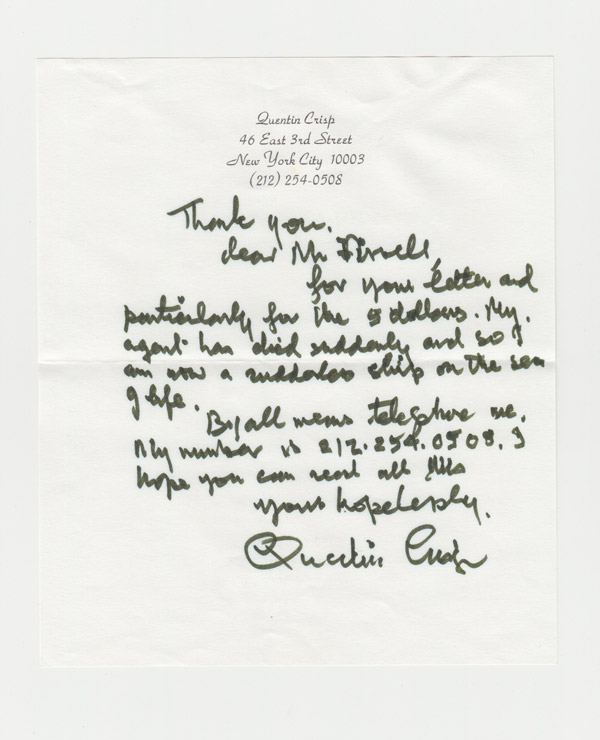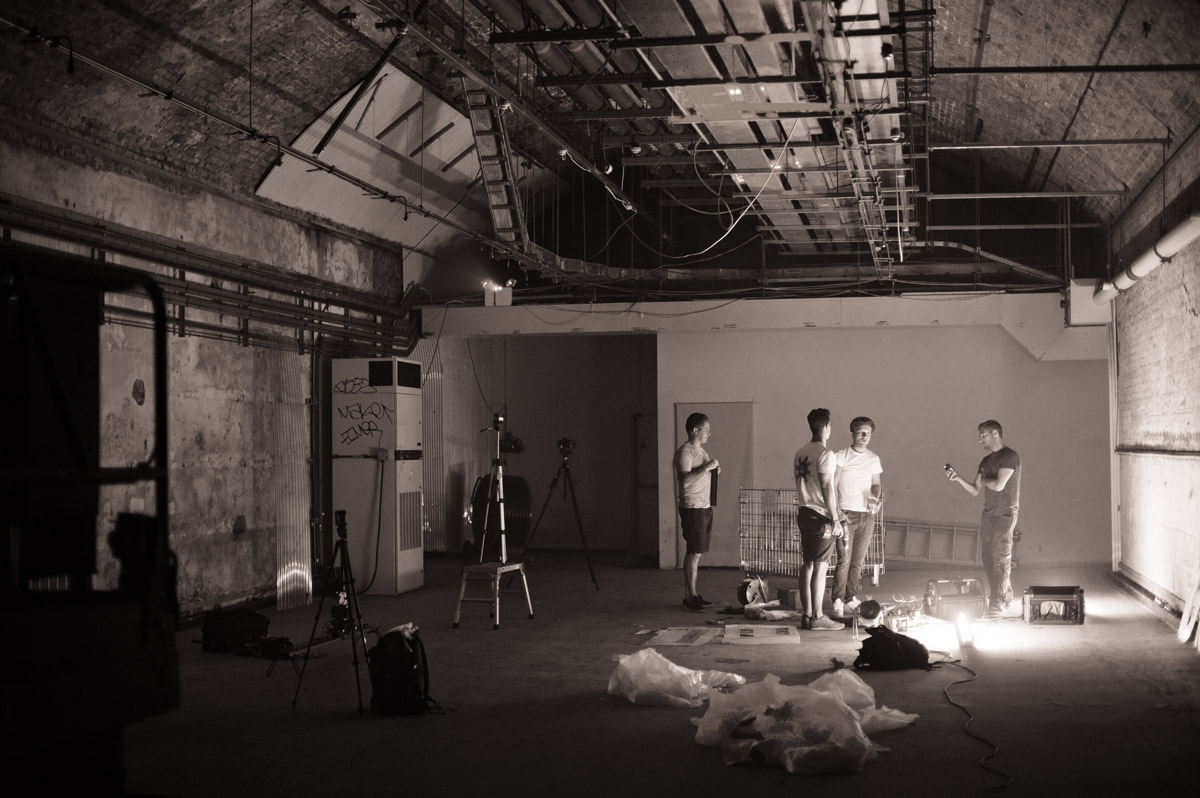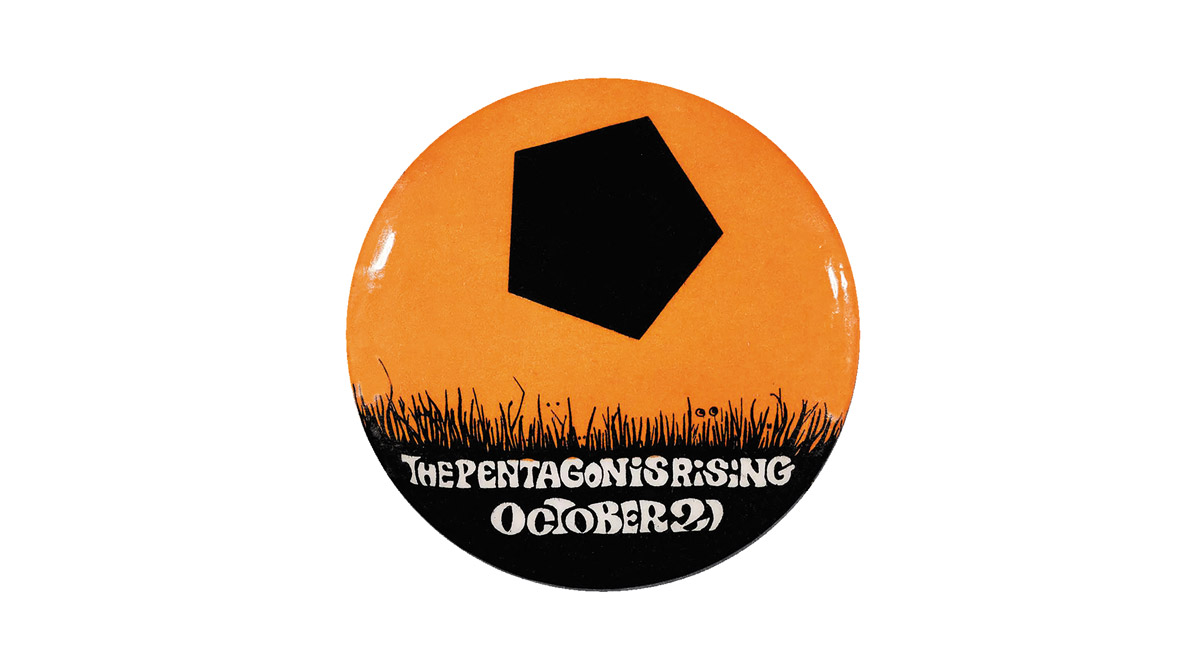
Using this catalogue
Any catalogue raisonné is a significant and complex undertaking, often requiring many years to complete.
Idiocy Walks with Wisdom,
2014 from
It Ends Here
commissioned by 20th Century Fox
u2014.1
This catalogue raisonné is an open-ended digital document, a catalogue raisonné in preparation of the work of a living artist.
The definition ‘billboard artwork’ has been used loosely to include any artwork or prototype implicating public signage in the broadest sense. This has made it possible to include important early works which were not necessarily created for the commercial billboard format but which provide insight into the artist’s relationship with artmaking for public display in general.
Where available, each artwork is represented by a documentary photograph (contemporary with the date of display). Catalogue entries utilise a medium-resolution image to make the document as quick-loading and flexible as possible. Click any image for access to the full resolution image and accompanying notes. In the case of a moving image work, the full resolution still image is augmented by mp4 video, where available.
It is not unusual for a work to have been known by more than one title. In each case, precedence is given to the most comprehensive title (usually the entire text of the artwork).
Each artwork has been assigned a catalogue raisonné number, which serves as a unique identifier for the work under examination. Catalogue raisonné numbers are assigned in order of each artwork’s creation in any given year, prefixed by the year of creation. The first poster created by the artist was also the first artwork created in 2001 so it is assigned the catalogue raisonné number
2001.1.
Where an artwork is one of a series, the master artwork number is augmented by a second decimal point. For example, the artist's first poster artwork
2001.1
is one of a series of three artworks so the three related works are numbered
2001.1.1, 2001.1.2, and 2001.1.3.
If more than one photograph is provided of the same artwork, these are differentiated by an alphabetical suffix. For example, there are 4 documentary photographs relating to the single artwork numbered
2001.2
so the respective catalogue numbers applied to the photographs are
2001.2a, 2001.2b, 2001.2c, 2001.2d.
Where a prototype is included in the catalogue raisonné, it is given the identifer of the completed artwork to which it relates, but with the prefix 'p'. For example, a prototype relating to artwork
2001.1.1
would have the catalogue number
p2001.1.1.
A similar convention is used in the case of source materials, prefixing them with the letter 's'. Source material relating to artwork
2019.1.1
would be given the catalogue raisonné number
s2019.1.1.
Where items relating to the biography of the artist are included - letters, photographs, and so on - these are catalogued in chronological order by year and prefixed with the letter 'b'. For example, the first biographical item in the year 1996 would be numbered
b1996.1
; the second item would be numbered
b1996.2
and so on.

Letter to the artist from Quentin Crisp, 1996
b1996.2
Where reference is made to the artist's work in other mediums, beyond the scope of this catalogue raisonné, the reference is prefixed 'u' for uncatalogued, followed by the year of creation, followed by a second decimal point, as required, to differentiate uncatalogued items of the same year.
The description of each artwork is given without headings in the interests of simplicity and on the basis that the descriptive content makes the heading self evident. Each catalogue entry begins with the year of first display in the public realm (or the year of creation if the work was not displayed or the display date is uncertain or disputed). Where there is insufficient reliable information to establish the date of an item with complete certainty, the year is preceded by the abbreviation c (circa).
Any catalogue raisonné is a significant and complex undertaking, often requiring many years to complete. It is, perhaps, easier when it is a catalogue raisonné in preparation with a living artist but it is also true to say that human memory, and especially the memory of an artist, is often selective and unreliable.
Recollection, then, must be corroborated by less unreliable sources - documentation, file dates, studio records, diary entries and so on. The artist has given access to the full resources of his studio, Martin Firrell Company, and in particular to the pre-existing and ongoing conservation work.

Martin Firrell Company, studio team, 2014
b2014.1
Over the course of time, different artworks had been filed by the artist under different dates and titles, or not filed at all. Labelling was random and often contradictory. Some artworks had been lost. Some had effectively ceased to exist as digital platforms fell into disuse and artworks were no longer readable. These uncertainties, discontinuities and confusions are all products of the general creative chaos that attended attempts to store and label the work at the time of its production.
Out of that sublime anarchy, much had already been done to organise, categorise and archive the body of work. Mark King, long associated with the artist, had started the process of salvaging artworks from lost formats, particularly those associated with Adobe’s now redundant Flash platform.
NOTE
Adobe Flash was effectively made redundant by the introduction of html5. The Flash Player was discontinued by Adobe at the end of 2020 for all users outside mainland China.
The catalogue also benefits from detailed research into the time period 2018-2020 when the artist was in residence with Clear Channel UK.
NOTE
Martin Firrell,
Monograph by Barbara Ulbrist (Editor) / Joe Moran (Contributor) (Zurich Books 4 April 2020)
ISBN 9781912622214.
This residency, on the invitation of CEO Justin Cochrane, had a profound impact on the artist’s approach to the billboard medium because it made possible a new, far-reaching serialism.
Counter Culture Rising
(2020.1)
is, perhaps, the most significant example of this new serialism, aided and abetted by eyewitness accounts from Judy Gumbo and Jo Freeman, activists working in the 1960s US counter culture movement.
The artist was interested in eye-witness accounts of the march on the Pentagon. His research was inspired initially by a small button badge from the Labadie Collection, University of Michigan, publicising the levitation of the Pentagon planned for 21 October 1967. In the artist’s own words:
This little button badge was the first reference I encountered to the levitation of the Pentagon. I didn’t realise this was a canonical happening in the American hippy movement until I started corresponding with Jo Freeman, Judy Gumbo and Nancy Kurshan, all founder members of the anti-war group the Youth International Party or Yippies.

The Pentagon Is Rising, 1967
s2020.1
The levitation was led by the poets Allen Ginsberg and Ed Sanders, and the activists Abbie Hoffman and Jerry Rubin. They meditated and chanted to raise up the Pentagon and ‘exorcise the evil within’. Allen Ginsberg described the levitation as a ‘happening’ that ‘undermined, psychologically, the authority of the Pentagon’.
When I asked Judy if the Pentagon had actually levitated, she told me Abbie Hoffman and her activist husband Stew Albert said the Pentagon rose between 6 or 3 feet off the ground. ‘I believed them,’ she wrote to me. ‘Why not?’
War Is Always a Failure,
2020 from
Counter Culture Rising
2020.1.3
It has been immensely gratifying to establish robust chronologies, and to describe and contextualise this weighty body of public artworks from an artist who has gently and consistenty sought to humanise the times we live in.
What Oppresses Us Shapes Our Desires,
2022
2022.4b



